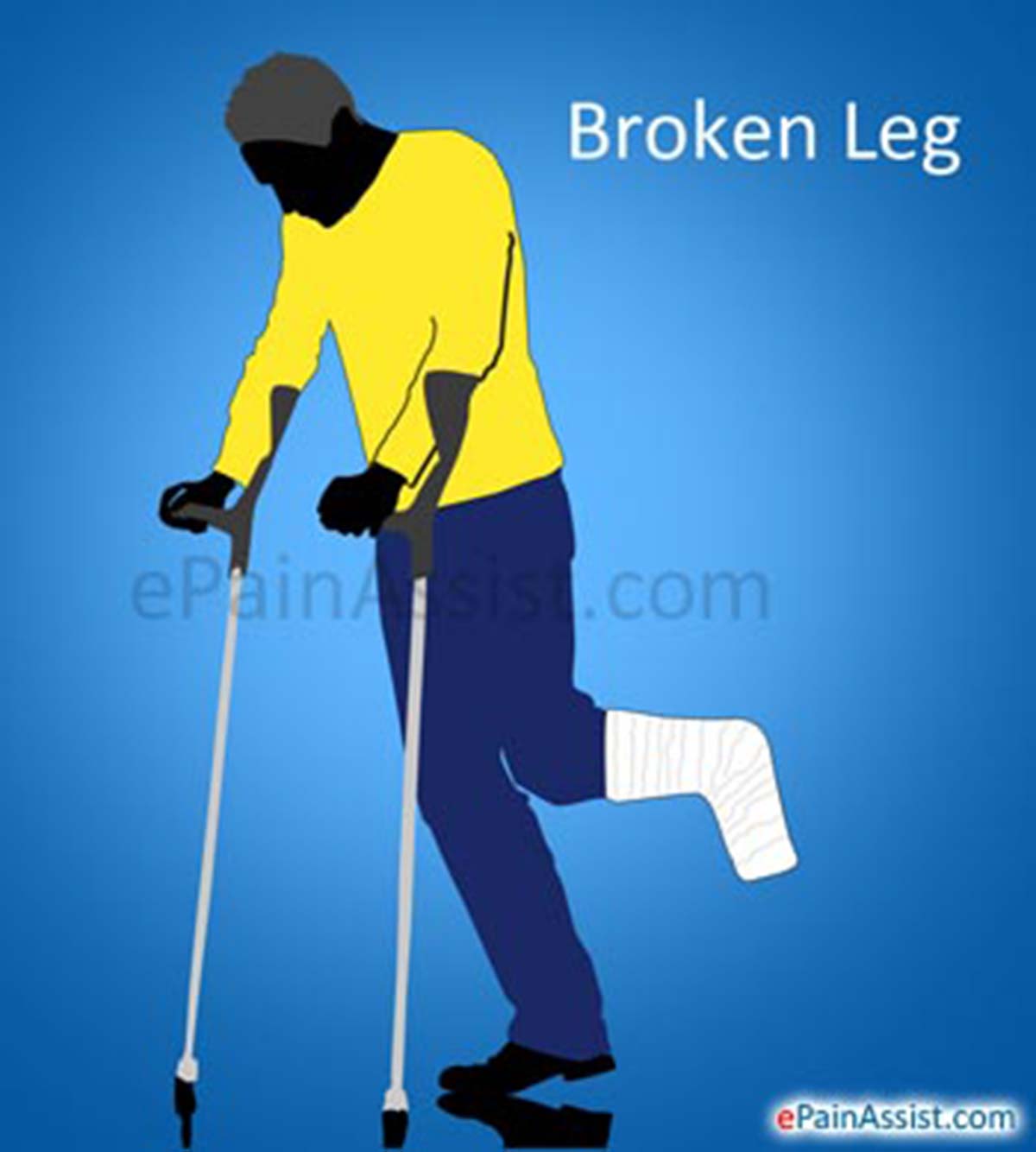A broken leg or a fractured leg is a condition where there is a break or fracture in the bones which make up the leg. These bones are: tibia and fibula which form the lower leg, and femur which is the thigh bone. Usually the tibia and fibula get injured more than the thigh bone. Individuals of all ages may suffer from a broken leg. It can either be just a crack in the bone or an open fracture where the bone ruptures the skin. Depending on the severity and the site of the fracture, treatment is done. An acutely broken leg requires surgery whereas other type of fractures can be healed with a cast or splint.

Causes of Broken Leg or Fractured Leg[¹]
- A direct trauma to the leg such as seen in sports injuries like football tackles or hyperextension of the leg in contact sports etc.
- Trauma inflicted in automobile accidents.
- Repetitive impact on the legs such as caused by running, playing basket ball etc. may result in a stress fracture. This is usually seen in tibia.
- Prolonged overuse of the bones may cause stress fractures in the weight-bearing bones of the body such as tibia.
- Some medical conditions that may weaken the bone such as osteoporosis also make the bones more prone to a fracture.
- Other risk factors[²] include medical conditions such as osteoporosis which leads to decreased bone density, high-arched feet or flat feet, rheumatoid arthritis or diabetes- all these conditions predispose an individual to a fracture.

Symptoms of Broken Leg or Fractured Leg
- Immediate pain after a direct trauma or injury to the leg.
- Pain upon leg movement.
- Increasing pain with movement.
- Tenderness at the fractured region.
- Difficulty in leg movement.
- In case of compound fractures, the leg may appear crooked or deformed.
- Patient is unable to walk.
- Swelling is usually present.
- Bruising may also be present.
Classification of Leg Fractures[³]
- Open or Compound Leg Fracture: This is a serious type of fracture where the bone ruptures the skin. It requires prompt and aggressive treatment.
- Closed Leg Fracture: In this type of fracture the bone does not pierce the skin and the skin remains intact.
- Incomplete Leg Fracture: In this type of fracture, the bone breaks or cracks but not into two separate parts.
- Complete Leg Fracture: In this type of fracture the bone breaks into two or more parts.
- Displaced Leg Fracture: In this type of fracture, the fragments of the bone lose their alignment. Surgery may be required to realign the bones.
- Comminuted Leg Fracture: In this type of fracture, the bone breaks or fractures into many parts. Surgery is required for this type of fracture.
- Greenstick Fracture: In this type of fracture, there is a break in the bone but the bone isn’t broken or fractured all the way through its thickness. This fracture is more common in children, as their bones are more flexible and softer than adults.
Treatment of Broken Leg or Fractured Leg
- Patient should seek prompt medical attention in case of a fracture.
- X-ray confirms the fracture and helps in assessing the severity of the fracture.
- Sometimes CT scan or MRI may also be ordered to look for associated injuries to the nerves and blood vessels.
- Usually a cast is applied for 6 to 8 weeks to immobilize the leg so the bones heal faster.
- NSAIDs such as ibuprofen or analgesics such as acetaminophen can be given to reduce pain and inflammation. If the pain is severe, then opioid medication such as codeine can be given.
- Surgery is required in case of a compound, open or displaced fracture. The bones are fixed together and held in place using pins or wires. After the surgery is one, the leg is placed in a cast for some weeks till it has healed.
- Crutches can be used to avoid complete weight bearing.
- After the healing is complete and the cast is removed, the patient should enroll into a rehabilitation program or physical therapy in order to regain full strength and mobility in the leg.
- If the fracture is not treated promptly, it may cause complications such as pain in the knee or ankle, delayed healing, osteomyelitis, damage to the nerve or blood vessel, compartment syndrome, arthritis, and leg length discrepancy.
Prevention of Broken Leg or Fractured Leg[⁴]
- Building bone strength by consuming calcium-rich foods like cheese, yogurt and milk etc. Calcium or vitamin D supplements also help in increasing bone strength.
- Proper athletic shoes should be worn for sports and other physical activities.
- Sports person should cross-train with alternating activities as these help in preventing stress fractures such as alternating running with biking.
